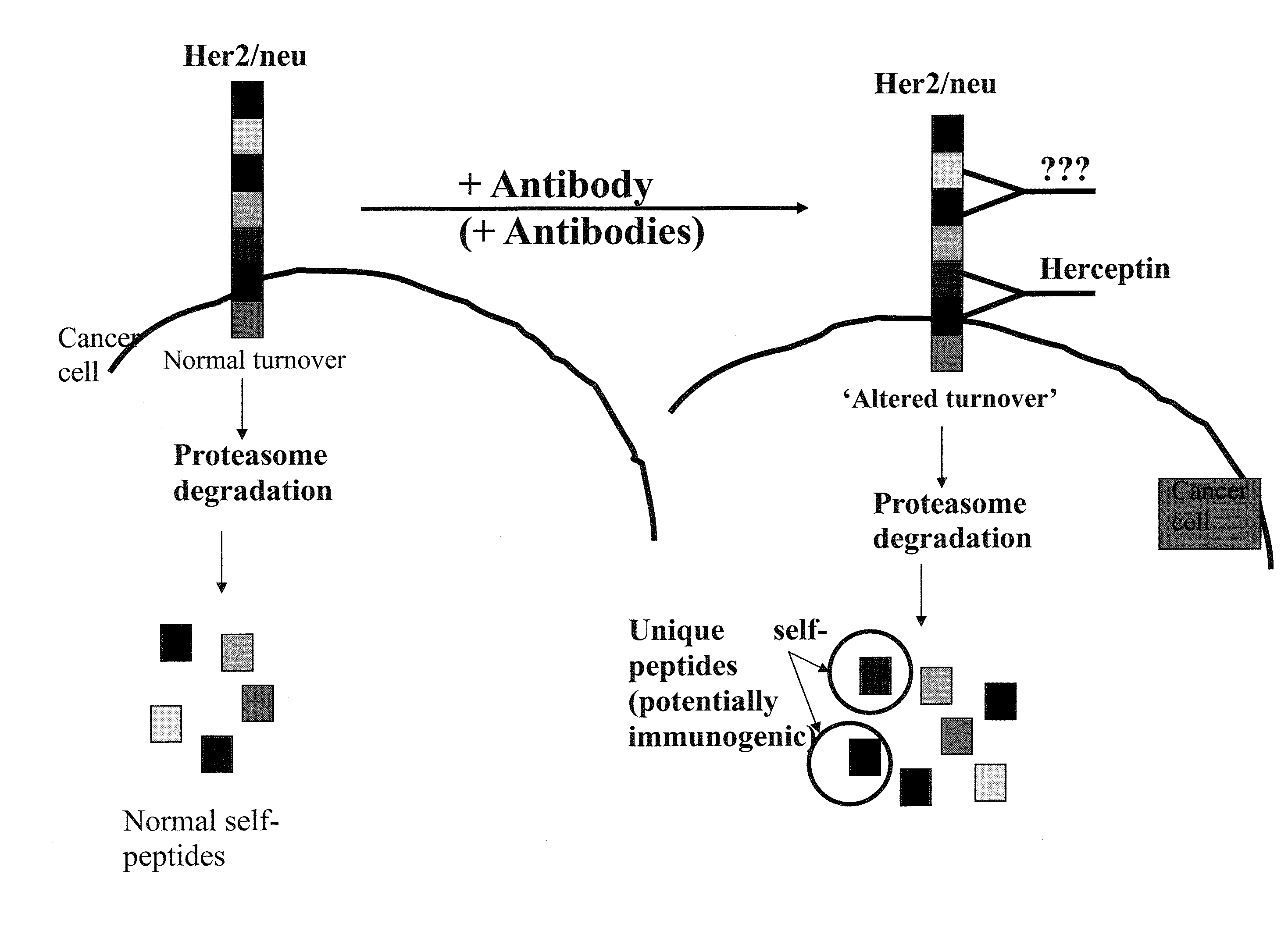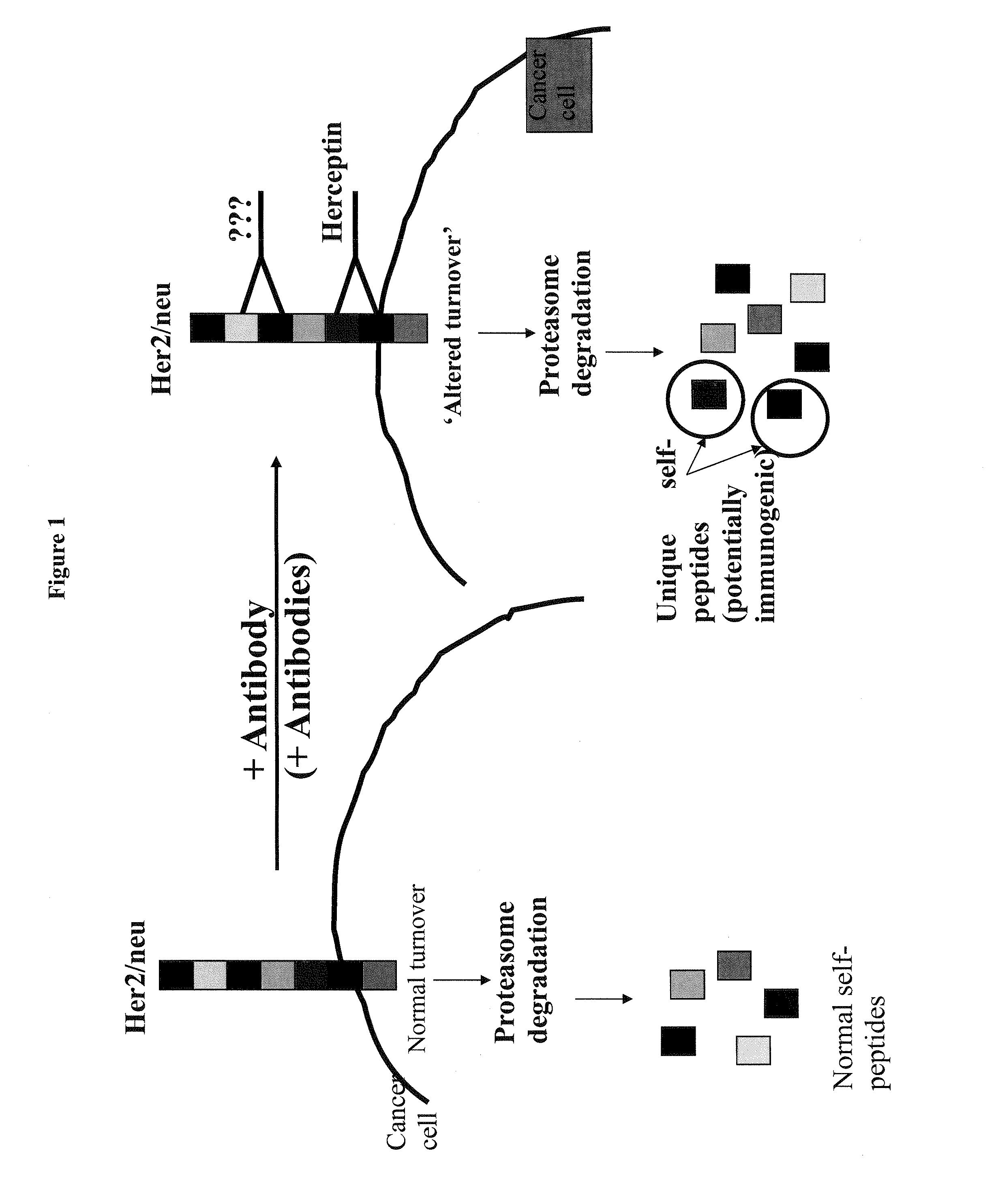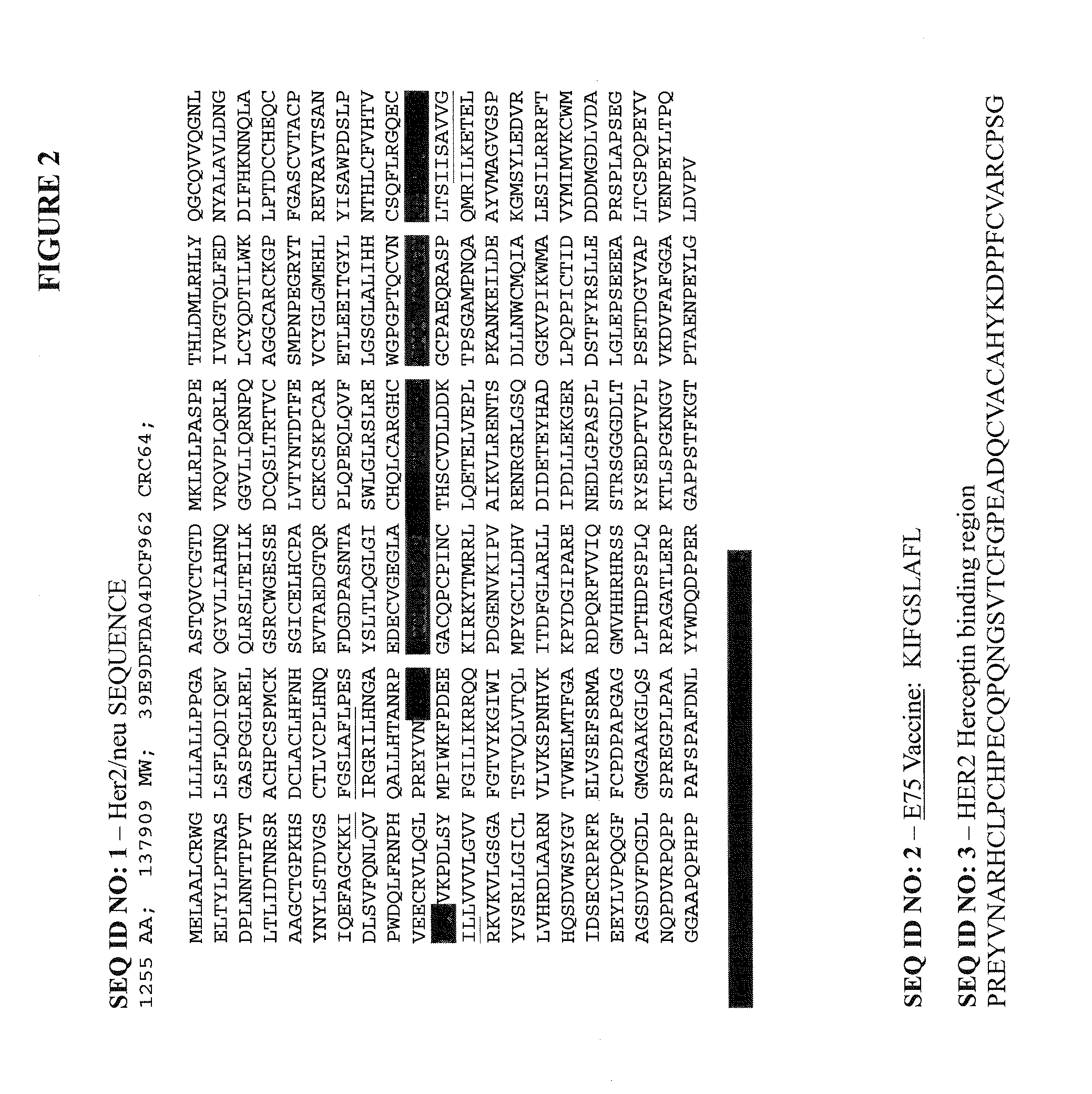Targeted identification of immunogenic peptides
a technology of immunogenic peptides and targeted identification, which is applied in the field of immunology/immunotherapy, vaccine discovery and development, can solve the problems of complex production and maintenance requirements, complex biological preparations, and inconvenient use, and achieve the effect of increasing the binding affinity of native peptide vaccine developmen
- Summary
- Abstract
- Description
- Claims
- Application Information
AI Technical Summary
Benefits of technology
Problems solved by technology
Method used
Image
Examples
example
[0069]The binding of trastuzumab (Herceptin) to HER2 / neu for the development of novel vaccines against HER2 / neu-expressing tumors was studied. The Ab-binding site of trastuzumab (Tz) was analyzed for peptides that bind HLA-A2 and A3. A peptide Her577 (aa: 577-585) within the Ab-binding site on HER2 / neu was identified, synthesized and tested. T2 HLA-stabilization assays were performed to confirm HLA-A2 binding activity of Her577 by flow cytometry. PBMC from 9 healthy donors were stimulated with Her577 and tested in 51Cr-release cytotoxicity (CTX) assays against 3 HER2 / neu-expressing tumor cell lines. Her577-stimulated PBMC from 5 HLA-A2+ healthy donors were also tested in CTX with HER2 / neu+ targets pre-treated with Tz. Simultaneous experiments were done with E75 and GP2, two other immunogenic peptides from HER2 / neu.
[0070]The Her577 peptide bound HLA-A2 comparable to E75 and GP2 with mean fluorescence intensity values of 1275, 1151 and 682, respectively. The average specific CTX by He...
PUM
| Property | Measurement | Unit |
|---|---|---|
| time | aaaaa | aaaaa |
| affinity | aaaaa | aaaaa |
| native structure | aaaaa | aaaaa |
Abstract
Description
Claims
Application Information
 Login to View More
Login to View More - R&D
- Intellectual Property
- Life Sciences
- Materials
- Tech Scout
- Unparalleled Data Quality
- Higher Quality Content
- 60% Fewer Hallucinations
Browse by: Latest US Patents, China's latest patents, Technical Efficacy Thesaurus, Application Domain, Technology Topic, Popular Technical Reports.
© 2025 PatSnap. All rights reserved.Legal|Privacy policy|Modern Slavery Act Transparency Statement|Sitemap|About US| Contact US: help@patsnap.com



